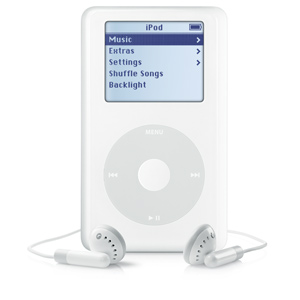
I used to live right next to Mission San Diego and thus in Mission Valley.
Down the midst of Mission Vallue is the I-8 interstate.
Bisecting Mission Valley along its north-south axis is the 805 freeway.
The 805 doesn’t cross the bottom of Mission Valley, though. Instead, flung across the valley is a huge bridge, (what seems like) hundreds of feet in the air.
I get a little nervous whenever I have to cross the Mission Valley Bridge. (I once saw a too-quickly-lane-changing pickup there flip over right in front of me, killing the man and pregnant woman inside it.)
But it’s a major traffic exchange point in San Diego (photographed above by satellite), and when I lived in Mission Valley, I regularly used it.
Particularly because had friends who lived on the north side of Mission Valley, right near where the 805 bridge rejoins solid ground.
It was really convenient to go over to their house! I’d just get on the I-8, head towards the Mission Valley Bridge, and then zoom up ramp to the 805 and the point where their house was.
On the way home afterwards, I’d head down the Mission Valley Bridge, take the exit ramp curving down to the I-8, and in a few minutes I’d be home.
Now: One Friday night I was heading down the 805/Mission Valley Bridge ramp and my car (didn’t have a pickup at the time) suffered a DOUBLE BLOW-OUT. Both of my rear tires popped.
Quickly, I worked my way into the emergency lane and stopped the car. I got out to see if I could change the tires and discovered this was impossible. Not only did I not have two spares, the car consumed the entire width of the emergency lane on the bridge, meaning that my body would have to hang out into Friday night traffic if I even attempted to change the tires.
Not a good solution.
I therefore started trudging back up the incline until I reached an emergency callbox, where I could call for help. (This was in the ’90s, before I had a cell phone.)
After trudging up half a mile or so (that’s how big the bridge is), I finally reached the callbox and summoned a tow-truck. I then returned to my car to wait.
At this point in my life, I was (foolishly) suppressing the Southern elements in my speech, except that they would come out when I was either very relaxed or under stress. Needless to say, I was twangin’ up a storm by the time the tow-truck guy arrived.
Once he got there, I waited in the cab of the truck and he used it’s mechanism to slide a big metal plate under my car, which the truck then lifted up and redeposited it onto the back of the truck.
As it picked my car up off the roadway and redeposited it, the truck vibrated MIGHTILY, ROCKING BACK AND FORTH IN THE EMERGENCY LANE PRECIPITOUSLY, WITH ME IN THE CAB LOOKING DOWN INTO (WHAT SEEMED LIKE) HUNDREDS OF FEET OF DARKNESS OVER THE CONCRETE RAILING AND SAYING PRAYERS TO WHOEVER THE PATRON SAINT OF BRIDGE-BUILDING MIGHT BE (St. Patrick, among others, as I later determined).
The tow-truck guy towed me home in mere minutes, and all was well that ended well. (I bought new tires the next day.)
Now: What brings this story to mind?
When I was walking up the incline to get to the emergency phone, I noticed something very disturbing: The Mission Valley Bridge . . . BOUNCED.
As cars would zoom past me toward whatever Friday night merriments they had planned, the roadway under my feet . . . BOUNCED. It wasn’t rigid. It was made out of concrete, of course, but still it . . . BOUNCED.
In earthquake-prone California, bouncy bridges are important.
The reason is that structures that have a little "give" in them have less of a tendency to break. That’s why the wings of an airplane are designed to bounce when they encounter turbulence. If they were rigid, they’d snap off. I therefore know I’m safer if I’m sitting over the wings and see them bouncing–thought I still don’t like it. It annoys my pre-reflective sensibility that rigid structures are stronger than flexible structures.
 Tonight I was thinking about this because I ran across
Tonight I was thinking about this because I ran across
A STORY ABOUT EXTRA-FLEXIBLE CONCRETE.
It may not have the zing of transluent concrete, but it’s zingy (and bouncy) enough.
EXCERPTS:
By mixing fiber in concrete scientists have created a bendable material that is lightweight, resists cracking, and lasts longer.
Fiber-reinforced concrete is not new. But this variety, developed at the University of Michigan, is said to be 500 times more resistant to cracking than what your sidewalk is made of. It’s also 40 percent lighter.
The stuff is called Engineered Cement Composites (ECC).
The Michigan Department of Transportation (MDOT) will use the ECC to replace part of a bridge that crosses Interstate 94. The slab will eliminate the need for expansion joints, which are moveable steel teeth that separate sections of regular concrete. With the ECC, a longer continuous slab will be possible.
The Mihara Bridge, a new structure in Hokkaido, Japan, has a deck of ECC that is a mere 2 inches (5 centimeters) thick. It is expected to open this month.
God bless the folks who have blow-outs on the Mihara Bridge!
